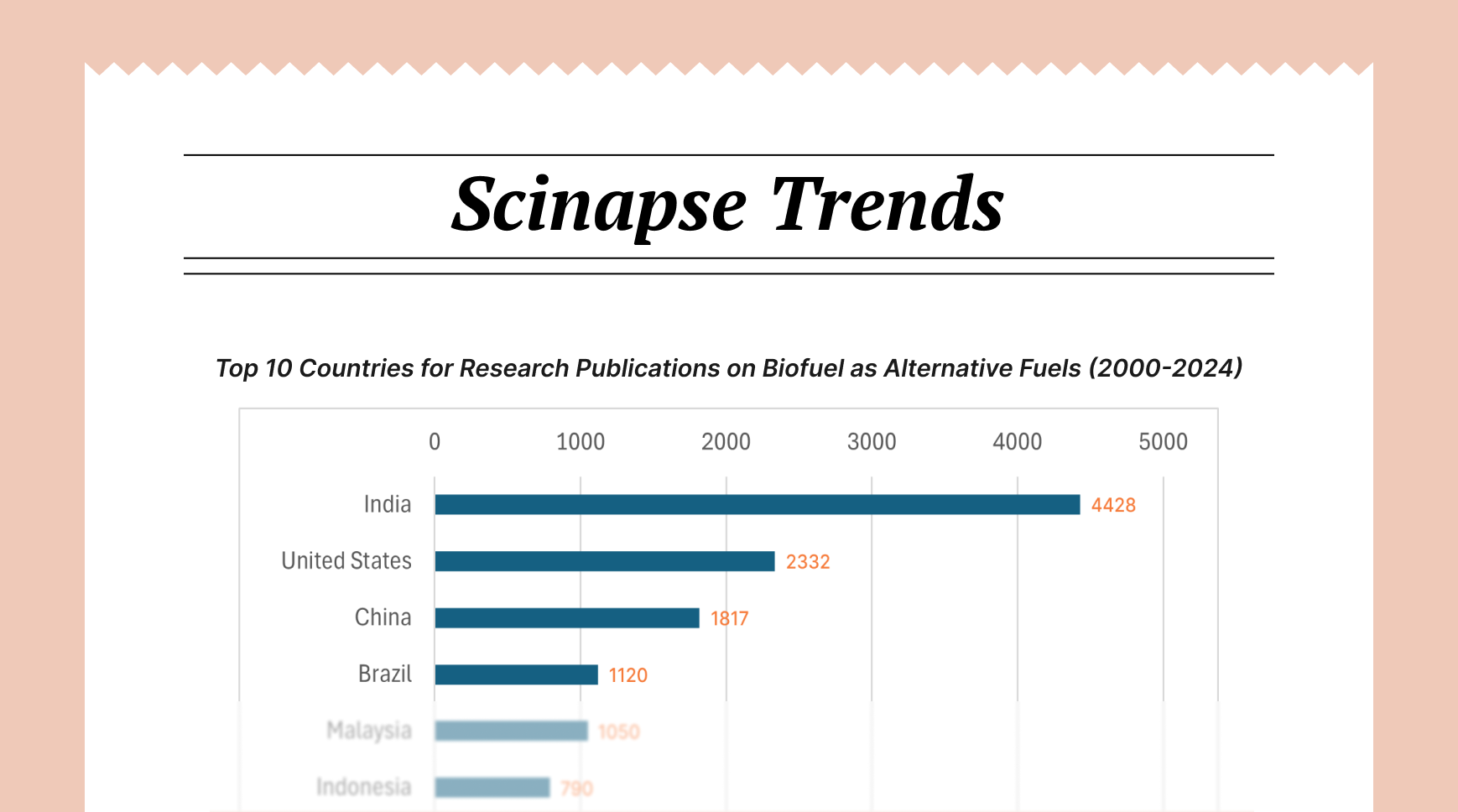Smart R&D Budget Allocation: 5 Effective Approaches for Growth and Innovation

Research and Development (R&D) drives innovation, empowering companies to create new products, improve existing ones, and build sustainable advantages. However, R&D budget allocation remains a challenge, as it requires balancing short-term gains with long-term, uncertain returns.
Here are five proven approaches to R&D budget allocation that can drive growth and innovation in modern companies.
Before you dive deep into the 5 most effective approaches for R&D budget allocation, check out your organization’s research and publication portfolio over the years with the help of Scinapse.io.
1: Outcome-Driven Prioritization Approach
The outcome-driven prioritization approach aligns R&D investments with specific business outcomes, such as revenue growth, market share expansion, or cost reduction. Rather than funding projects based on perceived potential alone, this approach directs resources toward initiatives with the highest potential to impact pre-defined objectives.
This approach enables companies to align R&D spending closely with overarching business priorities, ensuring that resources are directed toward projects that support growth objectives. It also provides flexibility, allowing organizations to reallocate funds swiftly as market conditions or business goals evolve.
While outcome-driven prioritization helps focus resources, it can lead to an overemphasis on short-term projects, leaving more exploratory, high-potential projects underfunded. Balancing immediate objectives with long-term innovation requires careful consideration to avoid sacrificing groundbreaking ideas for short-term gains.
R&D Budget Example for Outcome-Driven Prioritization Approach
A major consumer electronics company, for example, implemented outcome-driven prioritization to enhance its portfolio of connected devices in smart factories. By focusing on projects expected to drive user engagement and subscriptions, the company achieved a substantial increase in revenue. This approach allowed it to iterate quickly based on customer feedback, continuously aligning its R&D efforts with evolving user needs.
2- Horizon-Based Budgeting Approach
Horizon planning divides R&D investments across three categories: Horizon 1 (short-term improvements), Horizon 2 (emerging opportunities), and Horizon 3 (disruptive innovations).
Horizon 1 projects focus on current product lines, Horizon 2 targets mid-term innovations, and Horizon 3 explores radical ideas that may yield long-term returns.
This approach helps balance R&D efforts across present and future needs, allowing for a diversified portfolio of projects that range from incremental improvements to transformative innovations. By maintaining a focus on different horizons, companies can ensure they are not over-investing in short-term gains at the expense of future growth.
Allocating funds across horizons typically involves setting percentage allocations, such as 60% for Horizon 1, 25% for Horizon 2, and 15% for Horizon 3. However, these percentages may vary depending on industry and company goals. Regular reassessment is crucial as projects progress from one horizon to the next.
R&D Budget Example for Horizon-Based Approach
A global pharmaceutical company employs the Three Horizons model to balance its R&D investments. Horizon 1 projects focus on incremental improvements to existing drugs, Horizon 2 targets promising new therapies, and Horizon 3 explores groundbreaking treatments like gene editing. This diversified approach has allowed the company to maintain a pipeline of products in various stages of development, securing both near-term profitability and long-term innovation potential.
3- Strategic Portfolio Approach
R&D portfolio management involves balancing risk, potential return, and resource allocation across a range of projects. By categorizing projects as high-risk/high-reward, low-risk/incremental, or somewhere in between, companies can create a strategic blend of initiatives that maximizes innovation while mitigating risk.
Effective portfolio management relies on data-driven metrics like Net Present Value (NPV) or Real Options Valuation (ROV) to prioritize projects based on their expected returns and alignment with company objectives. This structured approach enables companies to make informed decisions about which projects to fund, defer, or drop.
By diversifying its project portfolio, a company can hedge against potential R&D failures while still exploring high-reward opportunities. However, implementing this approach requires robust evaluation and monitoring systems to track each project’s performance and adjust budgets as necessary.
R&D Budget Allocation Example for Portfolio-Based Approach
Consider a technology firm that applies portfolio management to allocate R&D funds. By segmenting projects into categories—like core product improvements, adjacent markets, and exploratory technologies—the firm balances incremental advancements with ambitious projects aimed at future growth. This strategy has enabled it to maintain a steady stream of new products, staying competitive in a rapidly changing market.
4- Value Chain Aligned Allocation
The value chain alignment approach allocates R&D resources based on specific areas within the value chain (such as raw materials, production, or distribution) that can benefit most from innovation. By targeting investments across the entire value chain, this approach enhances end-to-end value creation, aligning R&D with operational and strategic needs.
This method is particularly advantageous in industries like manufacturing, where operational efficiency and cost management are critical. Aligning R&D with the value chain fosters closer collaboration between R&D and operational teams, often resulting in shorter time-to-market and greater production efficiencies.
Companies should start by identifying critical components within the value chain that offer the highest return on R&D investments. Regular assessments are necessary to ensure that R&D efforts remain aligned with shifts in the value chain or market demand.
R&D Budget Allocation for Value Chain Alignment
Automotive companies can use value chain alignment to guide their R&D investments. By focusing on reducing emissions within their supply chain and production processes, the companies can enhance their sustainability profile and improve their market position. This alignment allows companies to meet evolving regulatory standards while delivering eco-friendly innovations to consumers.
5- Incremental vs. Radical Innovation Balancing
Incremental innovation focuses on enhancing existing products or services, while radical innovation introduces groundbreaking solutions that can disrupt entire markets. Balancing these two types of innovation is essential for companies seeking both short-term returns and long-term market impact.
A balanced approach allows companies to generate revenue from existing products through incremental improvements while simultaneously investing in more radical projects that may revolutionize their industry. This mix ensures ongoing relevance in the market while cultivating a pipeline of transformative ideas.
Organizations can achieve balance by setting aside a fixed percentage of the R&D budget for each innovation type, adapting these percentages based on market dynamics. Some firms adopt an adaptive strategy that reallocates funds to incremental or radical projects depending on business needs and external opportunities.
R&D Budget Allocation Example for Balanced Incremental vs. Radical Innovation
Consumer goods companies that balance incremental and radical innovation by dividing its R&D budget into two streams: one focused on enhancing their current product lineup, and the other dedicated to developing new product categories. This dual approach enables companies to both strengthen their brand with established products and expand into new markets with breakthrough innovations.
Choosing the Right R&D Budget Allocation Approach for Sustainable Growth and Innovation
Effectively allocating R&D budgets for growth and innovation is a complex, multi-faceted process. The right strategy depends on an organization’s unique goals, industry dynamics, and innovation culture.
To recap:
- Outcome-Driven Prioritization provides alignment with specific business goals.
- Horizon-Based Budgeting ensures a diversified focus on current, emerging, and future innovations.
- Strategic Portfolio Management balances risk and reward across a range of projects.
- Value Chain Alignment enhances end-to-end efficiencies and operational collaboration.
- Incremental vs. Radical Innovation Balancing sustains relevance while fostering future breakthroughs.
Ultimately, companies should select and customize these approaches based on their growth stage, risk tolerance, and market environment. Regular reassessment and adaptive budgeting ensure that R&D remains aligned with both short-term demands and long-term vision, enabling businesses to drive consistent innovation and sustainable growth. By implementing one or a combination of these approaches, organizations can maximize the impact of their R&D investments in AI as well, creating a resilient foundation for future success.
Final Thoughts on R&D Budget Allocation…
Successful implementation of these approaches requires careful attention to organizational alignment and change management. Organizations must develop clear protocols for integrating new allocation methodologies with existing systems and processes. This includes establishing appropriate governance structures, developing communication strategies, and implementing performance monitoring systems.
Success metrics should be carefully designed to balance short-term and long-term objectives. Organizations should develop comprehensive dashboards that track both innovation outputs (such as patents and new product launches) and value creation metrics (such as revenue growth and market share gains).
Organizations must recognize that these approaches are not mutually exclusive but rather complementary elements of a comprehensive R&D management strategy.
To improve your organization's R&D projects in a smart and budgeted manner, schedule a demo with us today!
Author: Uttkarsha B
- AI-Ethicist and STM Research & Publishing Expert
Never re-search again.
Scinapse is made by researchers for researchers.
Join the next generation of research at ⏯️ https://scinapse.io/
Pluto Labs
Pluto Labs helps researchers focus on their research by improving several inefficiencies in the academic research process. We offer data-driven insights from academic papers, allowing users to easily obtain review-level results for their desired range of papers.
https://pluto.im/





Comments ()